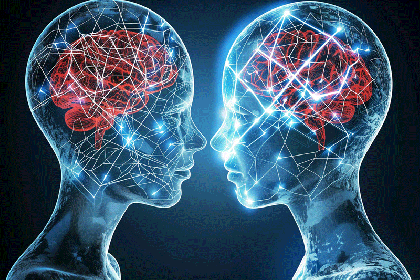What Creates Chemistry? The Science Behind That Spark
The feeling of an instant, undeniable connection with someone often feels like fate, but science reveals that chemistry is a combination of biological responses, subconscious signals, and psychological factors that pull two people towards each other.
Here is what science tells us about how chemistry truly forms:
Subtle Signals and Scent
While the role of human pheromones remains uncertain, some research indicates that scent may play a part in attraction by subconsciously signalling genetic compatibility, leading to feelings of comfort or interest without conscious reasoning.
Dopamine and Desire
The neurochemistry of love states that attraction activates the brain's reward system, releasing dopamine, the chemical linked to pleasure and motivation. This results in:
- Feeling energised and alive around the person.
- Wanting to spend more time together.
- Amplified attraction when trying new experiences together.
Oxytocin and Connection
Affectionate touch, eye contact, and closeness trigger oxytocin, known as the 'bonding hormone' which is also involved in the neurochemistry of love. The release of this hormone:
- Builds trust and warmth.
- Creates emotional security.
- Transforms initial attraction into deeper connection.
The Power of Mirroring
The feeling of "clicking" often comes from nonverbal synchrony:
- Mirroring gestures and speech patterns.
- Matching facial expressions and posture.
- Finding a natural, easy conversational flow.
Mirror neurons support this process, helping people feel seen and understood.
Psychological Compatibility
Chemistry is also grounded in psychological connection:
- Shared values and humour foster comfort and resonance.
- Complementary traits create a dynamic balance.
- Emotional understanding strengthens attraction.
These elements turn initial interest into a lasting bond.
Familiarity and Proximity
The more time you spend around someone, the more comfortable and attractive they may seem, a concept known as the 'mere exposure effect'. Consistent, positive interactions build familiarity and connection naturally.
Novelty and Shared Experiences
New and engaging experiences can enhance attraction by raising arousal and dopamine levels:
- Exciting activities can make your time together feel more meaningful.
- Shared adventures foster connection and closeness.
While constant novelty is not necessary, occasional new experiences strengthen chemistry.
Pulling It All Together
Chemistry is the result of a multi-layered interplay between:
- Dopamine, which fuels desire.
- Oxytocin, which creates emotional closeness.
- Mirror neurons, which help you attune to each other.
- Psychological compatibility, which sustains the connection.
- Familiarity and shared experiences, which allow chemistry to grow.
You cannot force chemistry, but you can foster it by:
- Being present and authentic.
- Creating opportunities for shared experiences.
- Building trust and emotional safety.
- Staying open and engaged.
Reflection
That spark you feel is your brain, body, and emotions signalling a potential connection worth exploring. By understanding the science behind chemistry, you can recognise and nurture connections that have the potential to grow into something deeply meaningful.




















